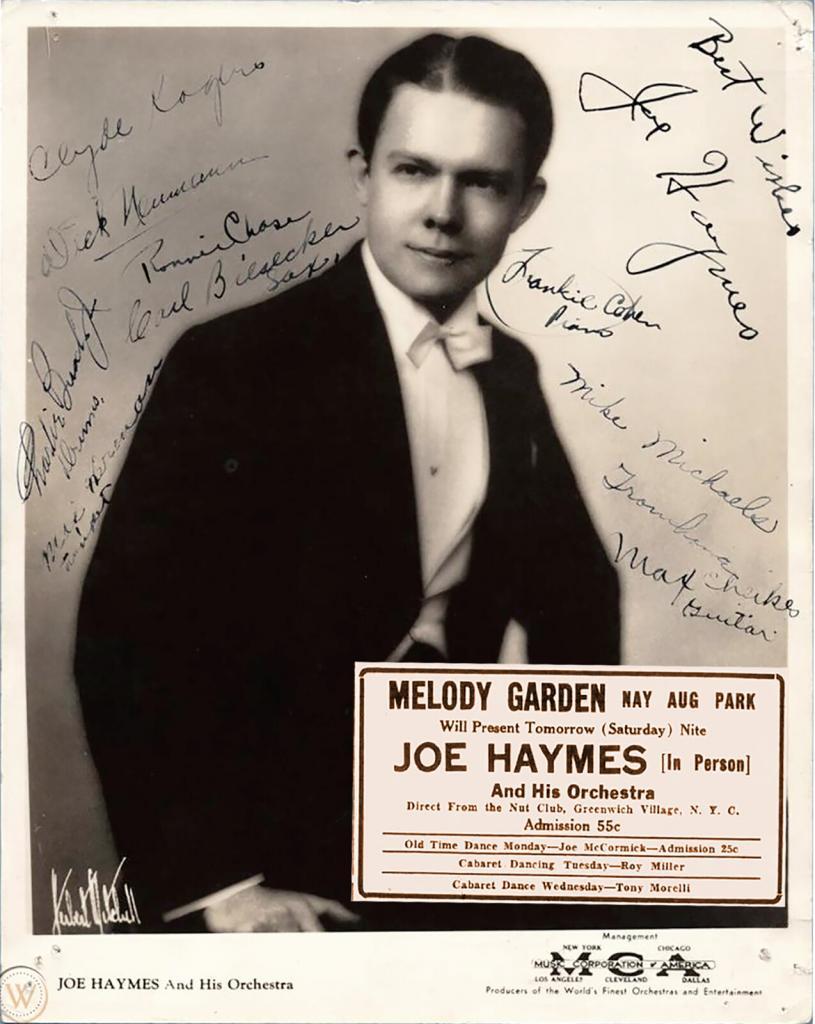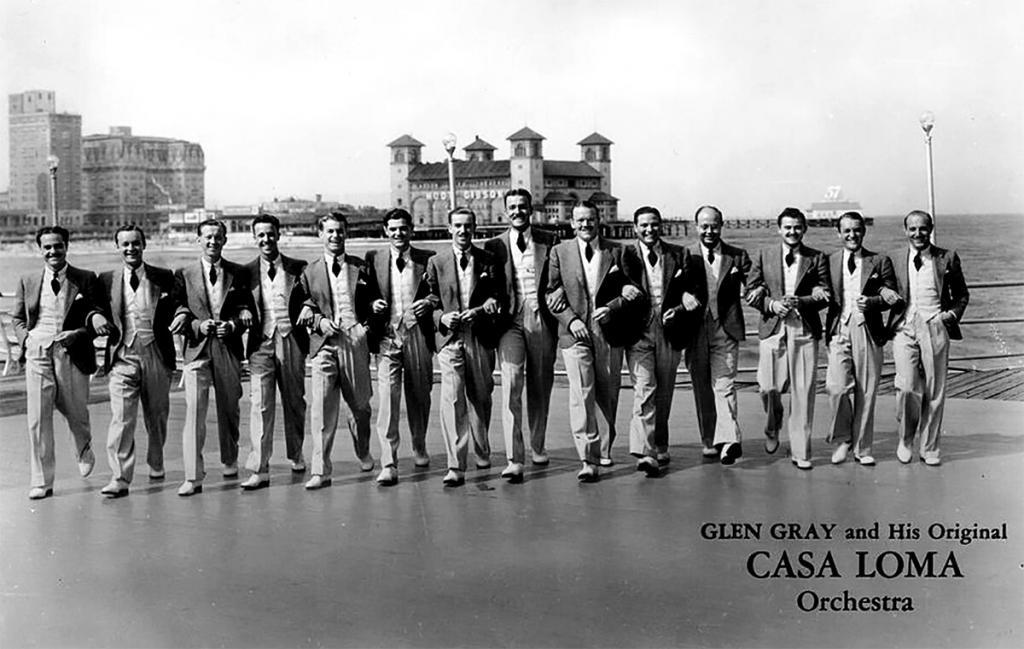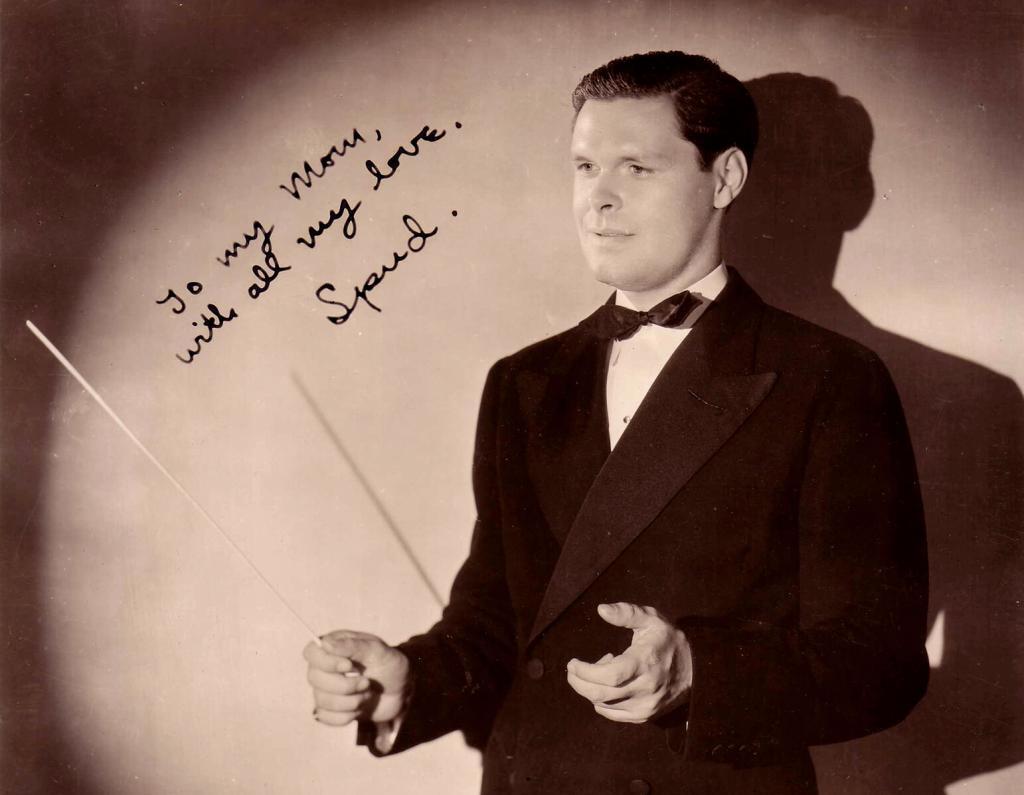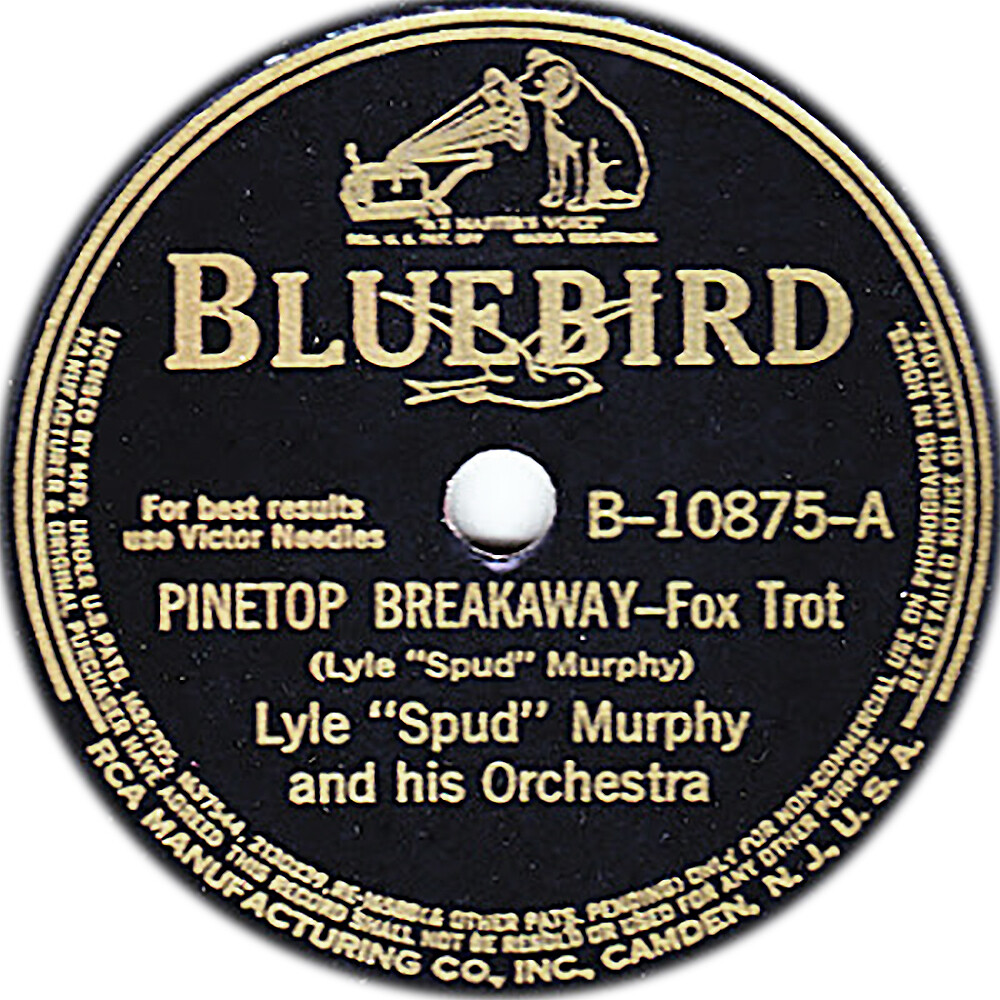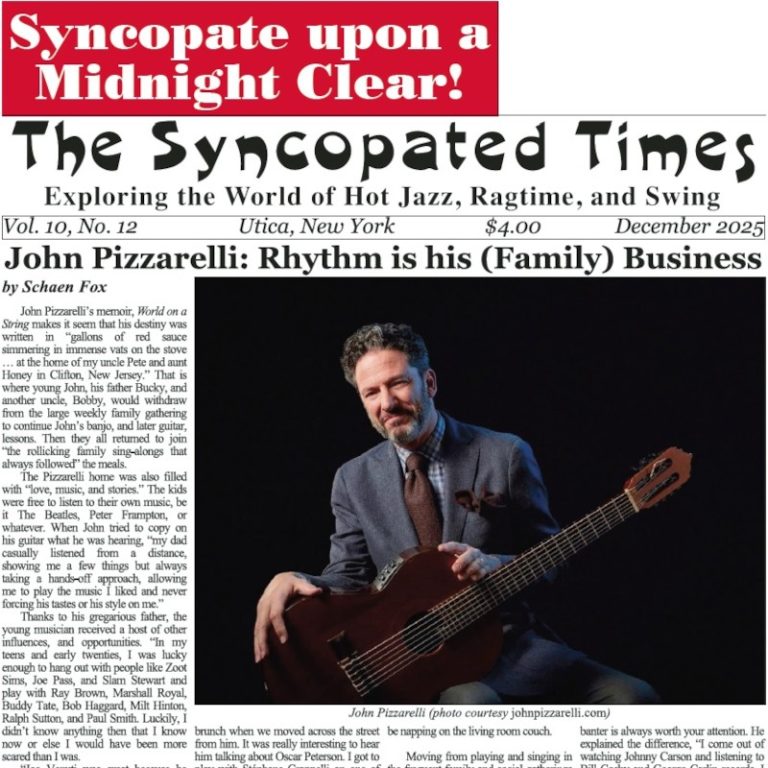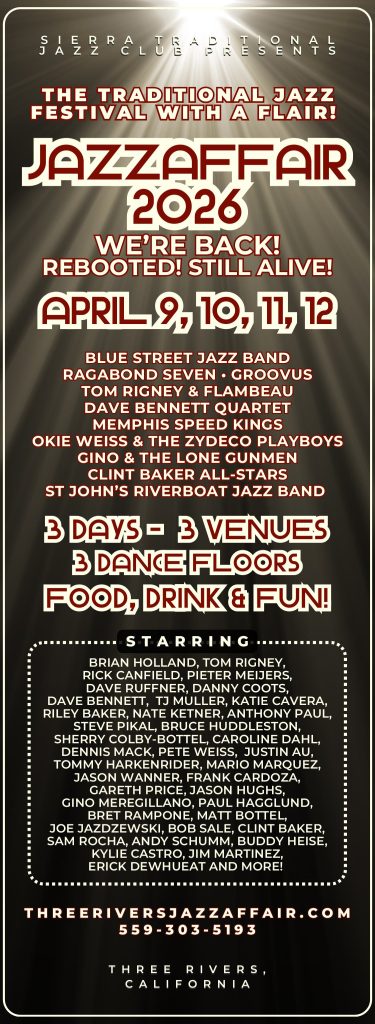Arranger, composer and multi-instrumentalist Spud Murphy wrote 600 charts for the top Swing orchestras of the 1930s, creating colorful and dynamic arrangements that shaped the sound of Swing. Contributing mightily to the sound of the era, he conceived tuneful, multi-layered charts for Benny Goodman, Casa Loma, Bunny Berigan, Fletcher Henderson and Bob Crosby.
In the 1940’s and ‘50s he wrote for the movies, reinvented instruction for composing and arranging and conducted innovative Third Stream recording sessions. The terms ‘unappreciated genius’ and ‘unsung hero’ do not overstate the significance of his impact on American Popular music, largely forgotten today.
In a 2003 interview Spud Murphy (Lyle Stephanovic,1908 –2005) spoke with characteristic wit, modesty and genuine pride for what he had achieved, vividly recalling famous bandleaders and former associates. This article is based on the Gabriel Broadcast Award-winning radio program, “Digging Spud Murphy.”
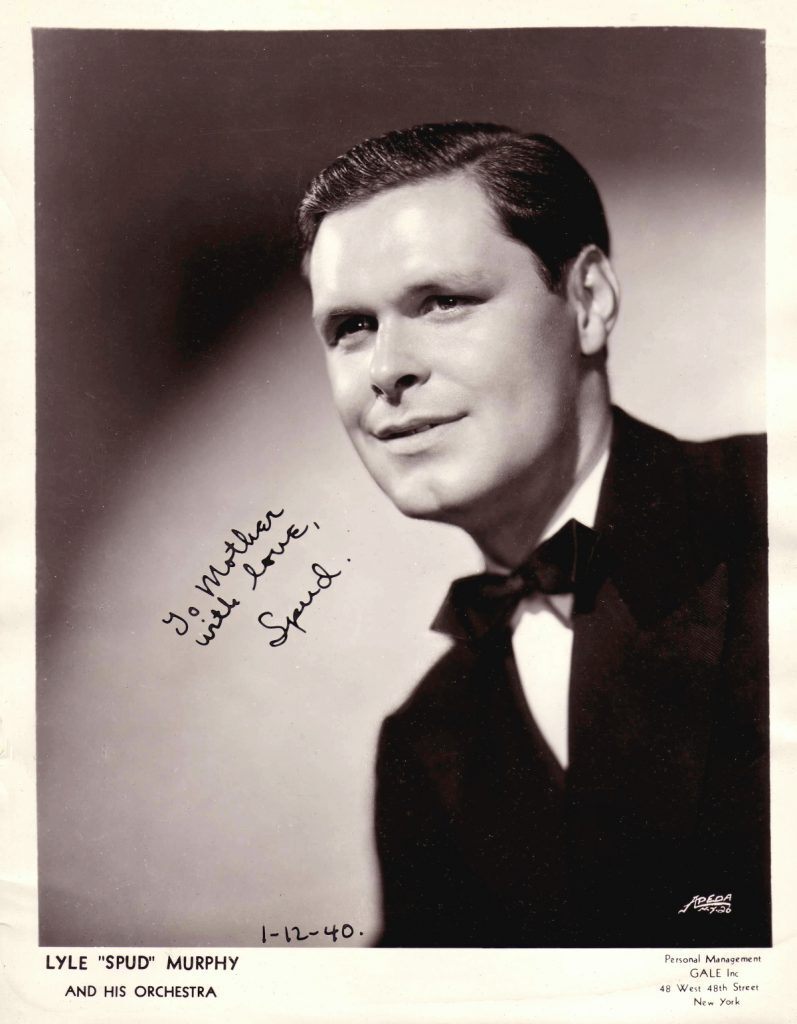
Illustrious Friends and Employers:
I was the only guy that ever worked with the two best bands in the world at that time. Because Casa Loma was the best and Goodman was on his way up and while I was writing for both of them Goodman passed Casa Loma.
I was friends with Cab Calloway and he used to take me out the place in Harlem where everybody goes, The Cotton Club, show me a nice evening.
Fletcher Henderson, he’s a great guy, a marvelous person and one of my best friends of all time; great piano player and terrific composer and arranger and we were friends for many years.
‘For Two Years I Starved’
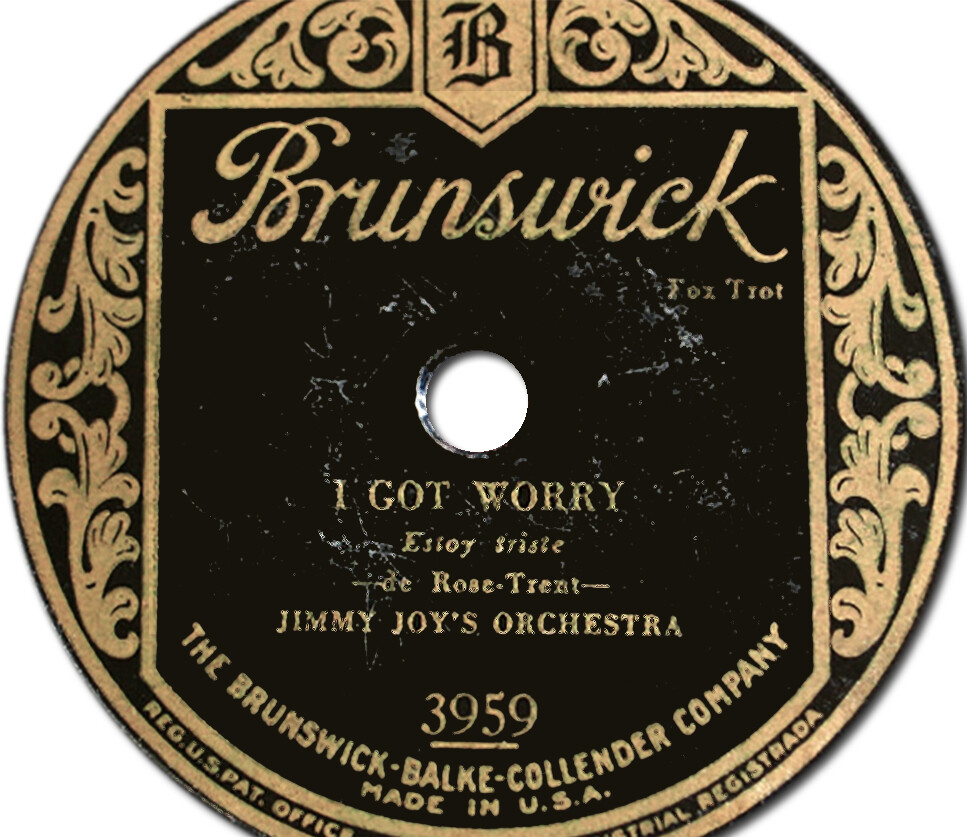
Born the offspring of American diplomats in Berlin, Murphy was not quite an orphan, but he was raised by relatives in Utah. As a youth he quickly developed prodigious musical gifts. Mastering clarinet, the saxes and brass horns, he set out searching for work on the West Coast in 1922. But at age fourteen he was too young for the cruise ship or other work he sought in San Francisco and Los Angeles: “For two years I starved.”
At first, the best he could manage was working with a banjo player in a two-man band: “The two of us got a job across the border from Yuma, Arizona in Sonora, Mexico. And we stayed there for seven months [in] 1925.” He explained his stage name: “In Ireland they call potatoes ‘murphys.’ Where I come from in Utah they call them ‘spuds.’ So, it’s a combination: murphy, spud, potato, it all mixes up together.”
Wandering the American Southwest, he gradually achieved minor success working in regional bands like Jeff’s Hot Rocks, the Rainbow Seven and writing arrangements for Johnny McFall’s Honey Boys, a 10-piece Texas band. The first recording of a Murphy chart was by the Jimmy Joy Orchestra in Chicago 1928, the jaunty “I Got Worry.”
Early Years and the Jimmy Joy/Mora’s Modern Orchestras, I Got Worry
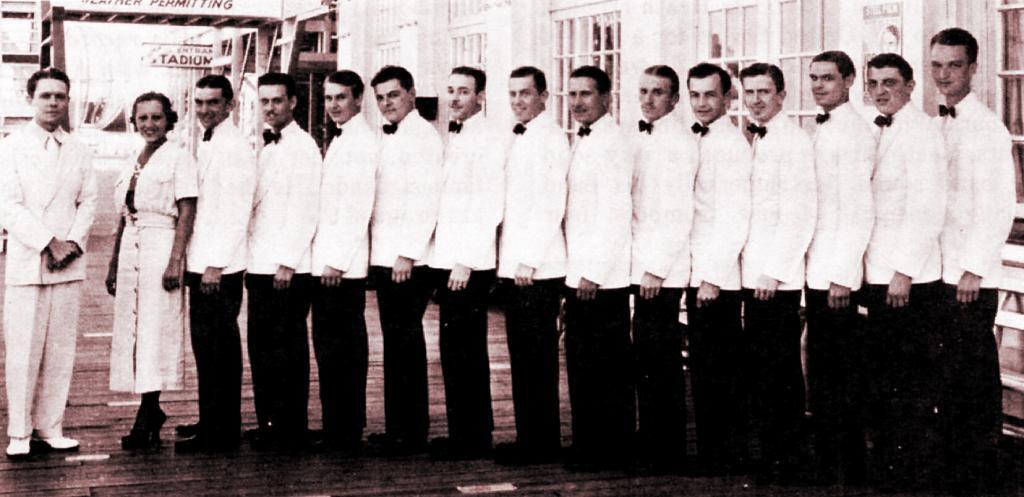
Bandleader Joe Haymes
Murphy and Joe Haymes were great friends and partners-in-crime, “we put together bands and other people took ‘em” recalled Spud. He wrote 44 arrangements for the Joe Haymes Orchestra, which toured widely playing hot jazz and sweet music with residencies at the Roseland and Empire ballrooms in New York City.
Joe Haymes (1907-1964) was a self-taught “composer, arranger, piano player and everything else” with a noteworthy talent for creating and selling orchestras. For instance, he sold his band to its star singer, Buddy Rogers and then in 1935 sold Tommy Dorsey his first professional ensemble.
In his youth Joe had traveled in the circus as a trapeze artist. But by around 1930 he was a staff arranger for the Ted Weems Orchestra. Haymes’ bands featured saxophonist Bud Freeman, and momentarily, horn players Bix Beiderbecke and Jack Purvis. In 1934, reed players Freeman and Toots Mondello played clarinets and saxophones on the hit “Dames,” arranged by Spud Murphy, and the bold “Lost Motion.”
Lost Motion – Haymes Orch 1934
Dames – Haymes Orch 1934
‘The Little Giant:’
We affectionately named him ‘The Little Giant’ because he was short of stature but long on musical intelligence. [The band] played mostly one-night stands, but sometimes we would go to a place called Pottstown, Pennsylvania . . . It was a good place, so we just one time parked there and put out a call that we were gonna build a band. And so, people came around from all those areas . . . Joe Haymes was very popular there, so we were always on radio [in Baltimore].
For a while, Haymes had one of the best dance bands in the country, making lots of records for the major labels 1932-37, quite a few under pseudonyms. Like Murphy, Haymes’ horizons broadened in the 1940s and ’50s when he arranged and composed for the Hollywood studios, eventually landing a steady gig with the Lawrence Welk television show.
Joe Haymes Orchestra, Modern Melody
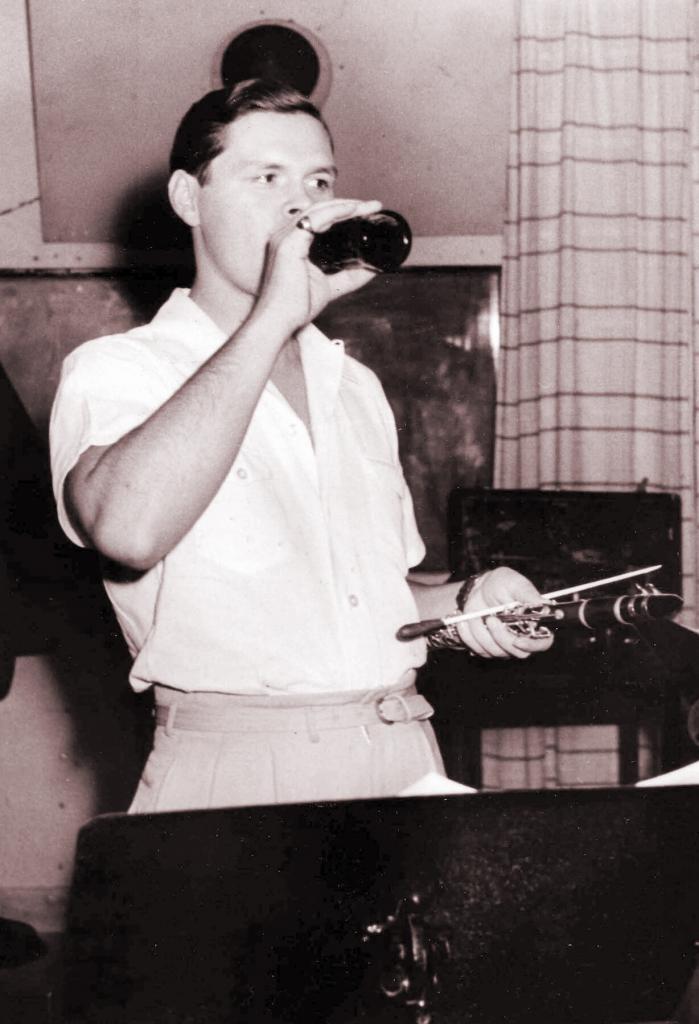
Fats Waller:
Fats and I were great friends . . . He came to my birthday party and played the piano. You know, I just invited him as a guest and he sat down and started to play the piano. And he just kept playing and they kept applauding and he just kept on playing. And I finally said, “Hey Fats, you were invited as guest. You’ve been playing the piano all day. I think I ought to pay you.” And he said, “You want to pay me? More food!”
One time I was up in the Southern Music Publishing office and Irving Mills said to him, “we want you to do this song on a recording.” Fats was saying, “OK fine.” And they were worried that he would turn it down. So, Irving Mills said to him, “If that’s not high enough in your key, we’ll have it transposed and everything.” And Fats says, “Don’t worry, a little Seagrams will bring it up to pitch.”
Six Hundred Swing Arrangements
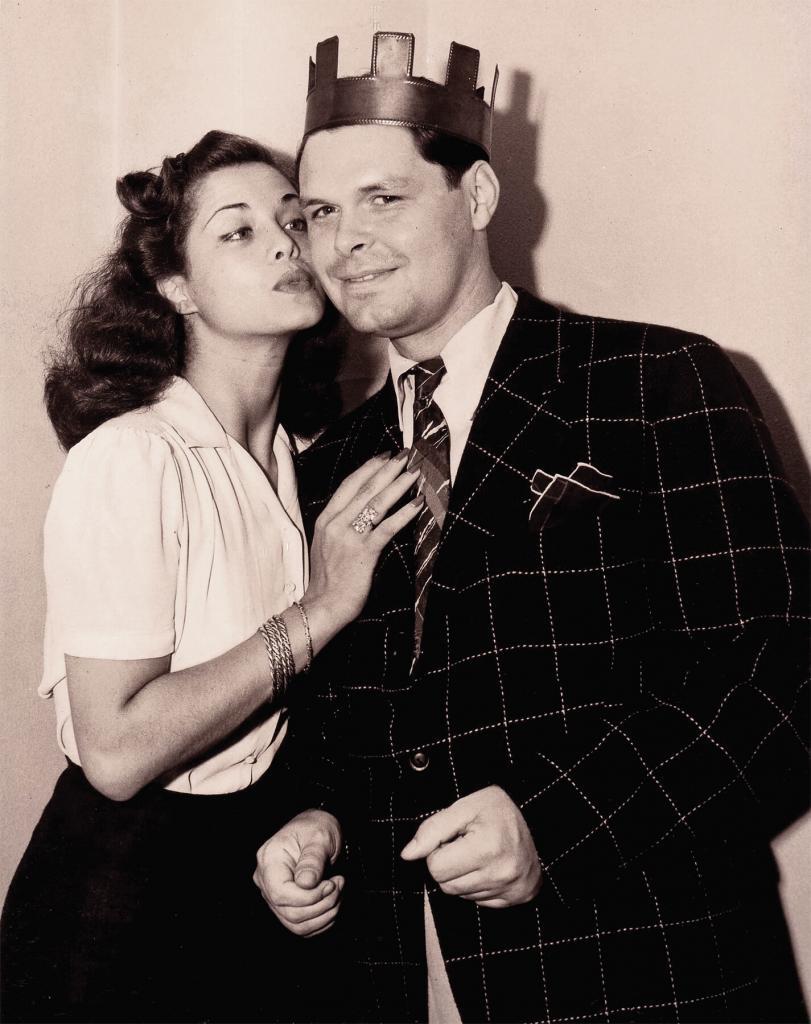
I asked Murphy what made him a successful Swing arranger. His main answer was that if the melody of a tune was good he’d use it. If it wasn’t would use very little and make up the rest – though I suspect there’s a great deal more to it than that. Marked by his signature talent for innovation and invention, he wrote some 600 arrangements by his own estimate, and more than 100 original tunes during the 1930s.
Spud was skilled at generating colorful, deeply layered charts that were custom designed to display an ensemble’s strengths. He often had the advantage of writing for guys he knew intimately from years on the road, telling me “I write for the players, I don’t write for the instrument . . . it doesn’t say first alto saxophone or third trumpet or anything, it’s the guy’s name.”
Richard Sudhalter in his landmark book, Lost Chords: White Musicians and Their Contribution to Jazz, 1915-45, calls him “one of the great neglected heroes of early jazz arranging” who “never achieved the critical attention accorded [Gene] Gifford or Fletcher Henderson.” Murphy’s scores “helped shape the sound and style of Benny Goodman’s Orchestra even before the leader began buying arrangements from Henderson.”
Poignantly, those remarks are buried in the footnotes of Sudhalter’s 900-page tome, inadvertently highlighting Murphy’s unwarranted and confounding obscurity. Incidentally, it’s unclear in Spud’s comment below about Roseland Ballroom whether he was speaking of performing there with the Casa Loma or the Haymes orchestra.
Saxophonist Chu Berry:
We worked at the Roseland together. It’s two bands you know, continuous music. The way the band was situated is that there’s a double bandstand and a bannister between . . . In Fletcher’s band the piano sat at the far eastern part of the bandstand and on ours the piano player was on the far west. The bands’ instrumentation was backwards, so I sat next to Chu Berry all the time.
Fletcher Henderson, Chu Berry, Do You or Don’t You Love Me
Casa Loma Orchestra and Clarence Hutchenrider
Murphy wrote 75 charts for Glen Gray and the Casa Loma Orchestra during 1935-37, building on the foundation laid by his famed predecessor, pioneering Swing arranger Gene Gifford. It seems that Spud probably performed onstage with Casa Loma at some point in the early years, but never on the record sessions, and was old friends with both Glen Gray and Hutchenrider.
Swing clarinet pioneer and multiple-reeds player Clarence Hutchenrider (1908-1991) was the nearest thing to a star soloist in the Casa Loma Orchestra. While he may have lacked the brilliance of Benny Goodman or virtuosity of Artie Shaw, he forged a groundbreaking Swing clarinet style years before the emergence of either and shines on Casa Loma’s biggest hits.
On the Road with Clarence:
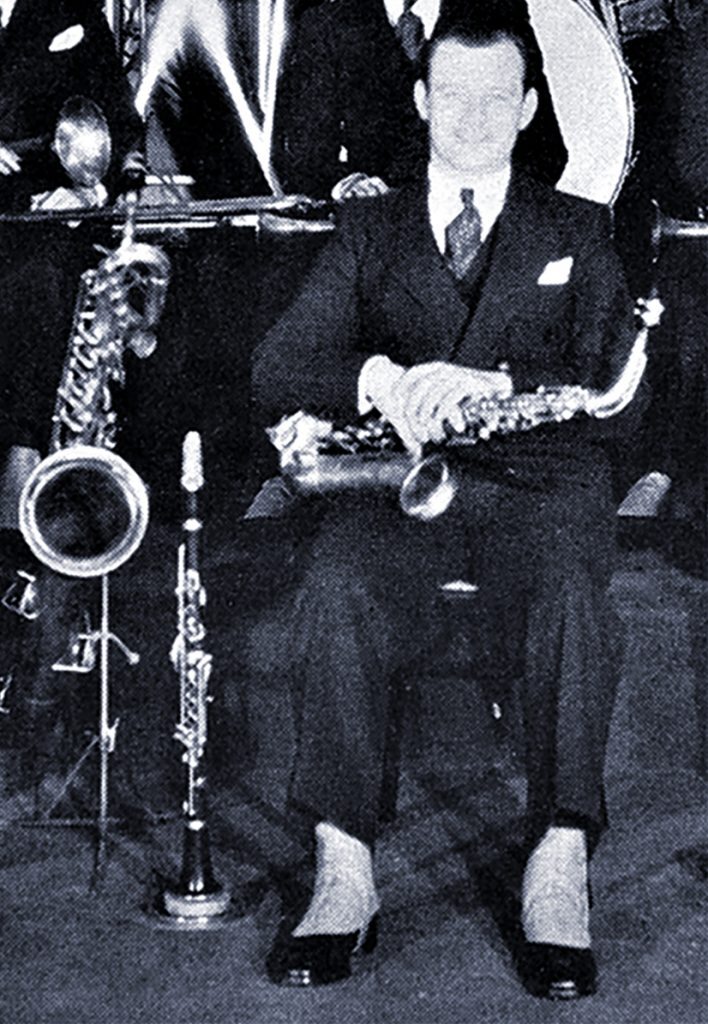
He and I worked in lots of bands together. Everyplace I went, he went. There were several musicians who, when we’d be working a job and the job would be coming to an end, the guys would be worrying “where we gonna go now?” So, they used to say, “Oh, don’t worry Spud has a job with another band. He’s gonna get us all on there.” And I would.
I would worm my way in. I’d make a couple of arrangements and then I’d tell the leader, “Hey, these guys that you’ve got can’t play this stuff. I’ll get you some good guys.”
Hutchenrider confirmed this tactic, as relayed by Richard Sudhalter in Lost Chords: “A lot of my success in those days was due to Spud . . . He would get into a band and then get me into it – or the other way around sometimes.”
Goodman, Anything Goes, Latin from Manhattan
Arranging for Goodman
Overlapping with his work for Casa Loma, Spud was a staff arranger for Benny Goodman and his Orchestra from 1935 to ‘37. The effervescent “Get Happy” is probably Murphy’s best-known chart for Benny. Also among his 102 arrangements for the orchestra are the tasteful classics, “Ballad in Blue” and “Diga Diga Doo.”
Goodman, Ballad in Blue, Cab Calloway, Diga Diga Doo
Working for Benny:
Well it had both a high and a low in it. The high: it was probably the best band around. And the low was Goodman. I don’t want to belittle him because it was not that way. He was just strange . . . he never remembered anybody’s name, so he called everyone “Pops” including his own family because he couldn’t remember their names either.
Goodman would . . . have dinner and listen to [Casa Loma] at the Essex House to see if I was giving them the same arrangements that I’d made for Goodman. Which is silly, the combinations were entirely different.
The program that we were on, the Let’s Dance show was on Saturday I guess, and they rehearsed on Friday. I had to do four arrangements a week for him: Monday, Tuesday, Wednesday, Thursday.
But I also had to do two arrangements for Glen Gray and the Casa Loma band. So, I had to do both of them on Friday. And the reason I could do that is because [Casa Loma] rehearsed after their job at 1:30 in the morning. So that kept me busy.
Casa Loma and Gene Gifford v. Goodman
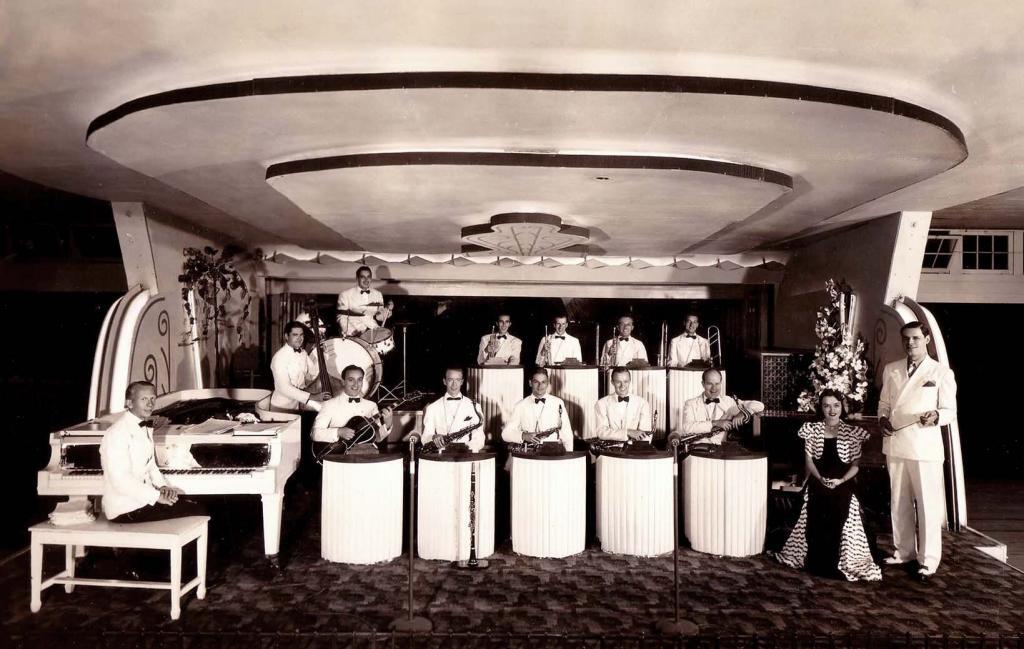
Bird of Paradise: The Story
Duke Ellington never recorded his elegant tune, “Bird of Paradise.” In 1935 Murphy was hired to create a “stock arrangement,” commercial sheet music presenting a pleasing score within the capacity of a typical Swing ensemble, among the 250 “stocks” he wrote.
“Bird of Paradise” features a characteristic Peacock or Butterfly motif where the instruments fan out across the scale in opposite stepwise motion, like butterfly wings opening or peacock feathers spreading. Spud said that he usually tried to hear auditions or performances of his scores, but this one eluded him. Sixty years later he was astonished to hear it played by a Swing orchestra in Los Angeles, Dean Mora and his Modern Rhythmists.
Murphy, Dean Mora’s Modern Rhythmists & Bird of Paradise
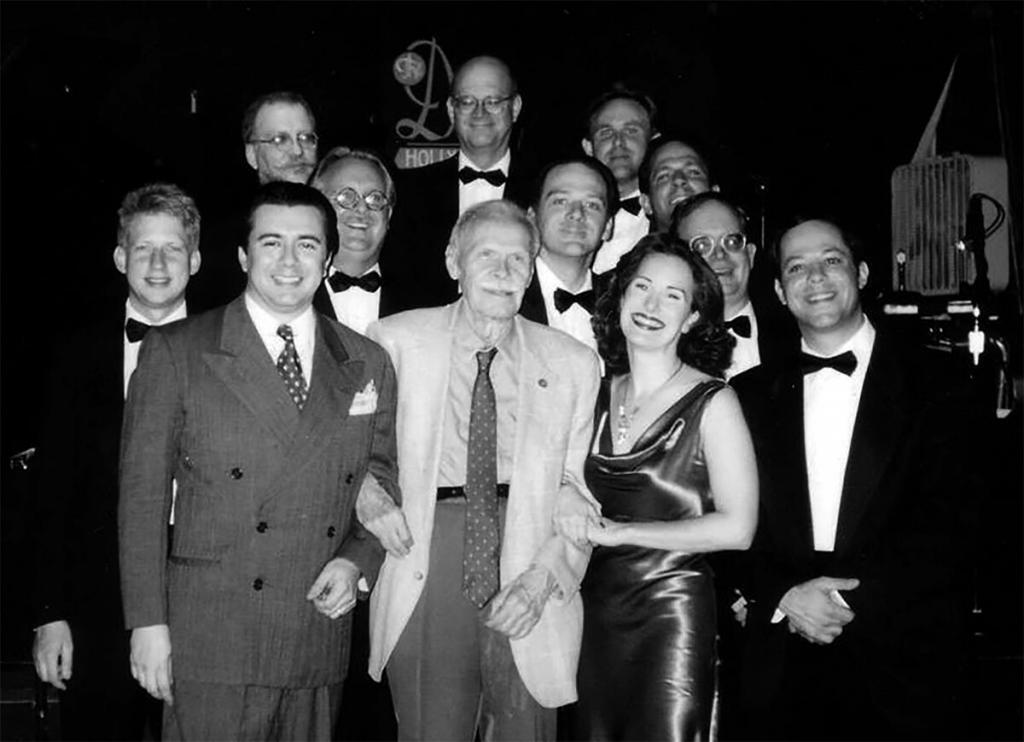
Bird of Paradise: Commentary by Dan Radlauer
I’ve asked an accomplished Swing arranger to provide us a look under the hood. My brother, Dan Radlauer, composes and arranges Big Band scores and teaches young performers, often generating the modern equivalent of stock Swing arrangements himself. Incidentally, his music studio was the location for the 2003 interview with Murphy, who was quite taken with Dan’s writing.
“As a stock arrangement it might be assumed that there wasn’t a soloist strong enough to carry that part of the arrangement. So, Spud’s focuses more on the ensemble work. Though there is a spot where the piano takes the limelight.
One of the notable qualities of the song (and Spud’s arrangement brings this out) is the conversation between the lower instruments of the orchestra (bass, piano left hand, low trombones and baritone sax) and the upper instruments (winds other than the baritone and trumpets).
Rather than performing the usual duties of those lower instruments, establishing the foundation of the chords, they become part of the melody, the musical back and forth, question and answer, and then a final response where they all come together, are identifying elements of the composition.
There is a lot of fun use of ascending and descending parallel harmony. This kind of device was used a lot in scoring for cartoons to emphasize movements up or down. From a compositional viewpoint, almost all the phrases end in the same rhythmic figure and that becomes the final ‘Hook’ of the song.
The two-beat feel is perfect for easy dancing, but even at this ‘medium’ tempo there’s plenty of fun challenges and changes for even a professional band. That this was expected to be easily played by a less able band than Dean Mora’s speaks to the quality of the players of the time.”
Accomplished Instrumentalist
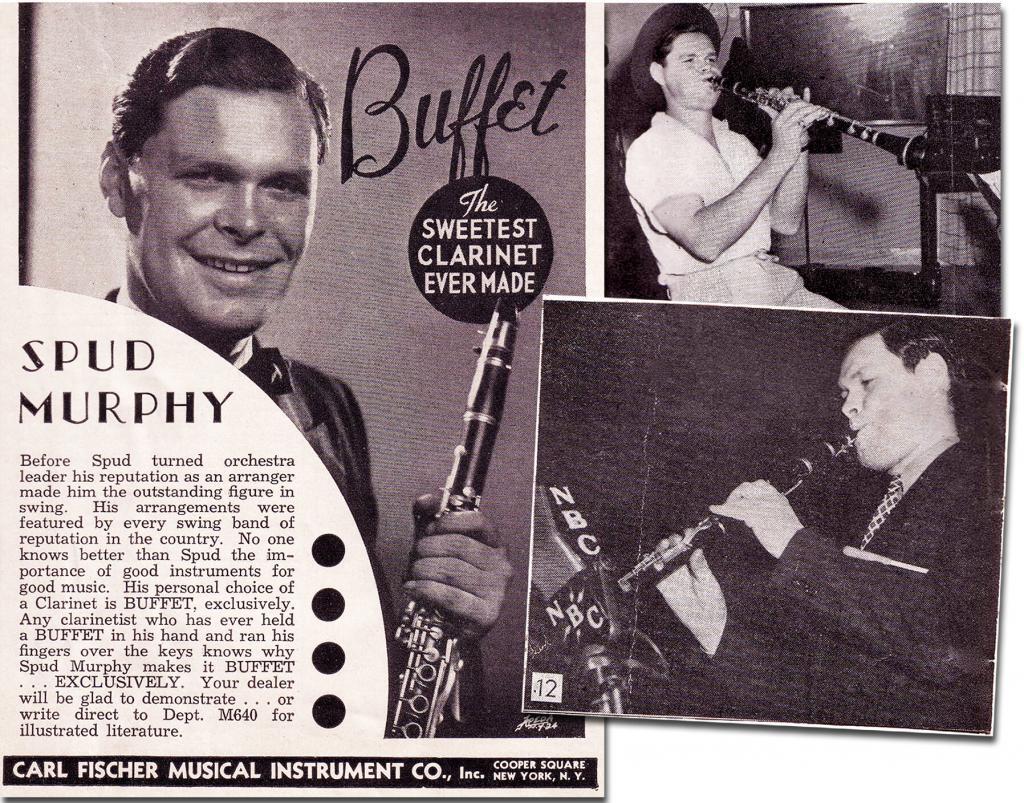 By the late 1930s, Murphy was a respected arranger, his fluency on several instruments aiding his writing. Plus, he had a second-career as a skilled multi-instrumentalist playing clarinet, most of the saxophone family, trumpet, valve trombone, flute, oboe, and bassoon. Clarinet gradually became Spud’s bread and butter instrument and he was a popular soloist. He said that he preferred the smaller, lighter instrument because it didn’t require the paraphernalia of a saxophone: straps, instrument-stands, carrying cases, or ofttimes, multiple instruments and part-books.
By the late 1930s, Murphy was a respected arranger, his fluency on several instruments aiding his writing. Plus, he had a second-career as a skilled multi-instrumentalist playing clarinet, most of the saxophone family, trumpet, valve trombone, flute, oboe, and bassoon. Clarinet gradually became Spud’s bread and butter instrument and he was a popular soloist. He said that he preferred the smaller, lighter instrument because it didn’t require the paraphernalia of a saxophone: straps, instrument-stands, carrying cases, or ofttimes, multiple instruments and part-books.
Spud’s Orchestra, 1938 – early 1940s
Murphy had modest success leading an ensemble of his own. In New York, Spud Murphy and his Orchestra held steady residencies and cut good records. He seems to have maintained an evolving ensemble as he made a transition to Southern California in the early 1940s. Composing, arranging and sometimes playing clarinet or sax, he waxed fourteen tunes for Decca, Vocalion and Bluebird labels 1938-39, including several originals ranging from mainstream Swing to the Raymond Scott-like “Booly Ja-Ja.”
Spud Murphy Orchestra, Just a Phrase, Booly Ja-Ja, Quaker City Jazz
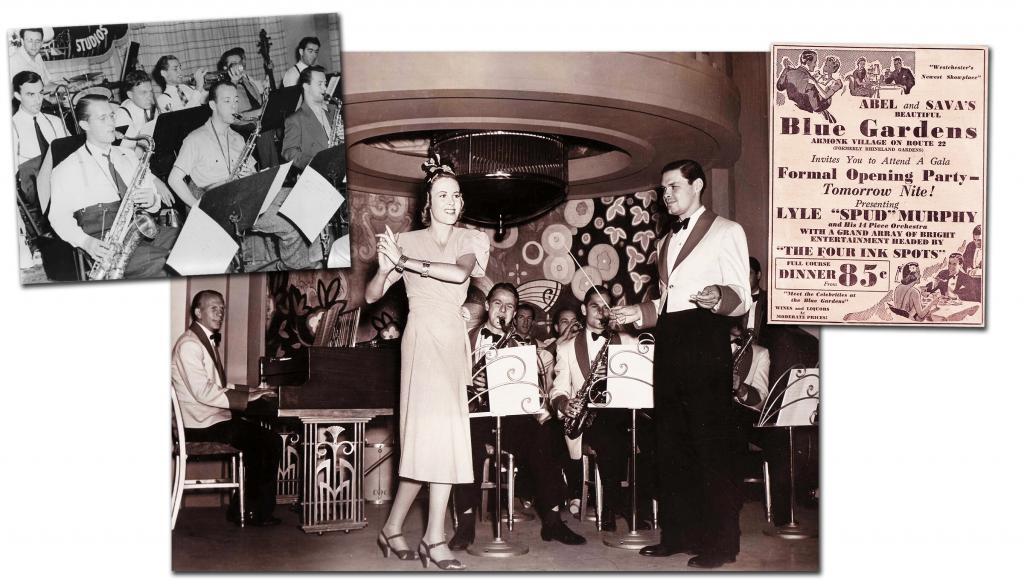
Dynamic Composer and Honored Elder
In the early 1940s, Murphy continued advancing his skills, moved to Los Angeles and authored Spud Murphy’s Swing Arranging Method. He became a staff composer and arranger at Columbia Pictures during the 1940s and ‘50s, scoring more than fifty motion pictures. His theme music for The Three Stooges, derived from “Three Blind Mice,” was one of his most famous movie cues. During the 1950s he still occasionally wrote for Benny Goodman or other bandleaders. He served as President of the American Society of Arrangers (1965-77) and was honored into his ninth decade.
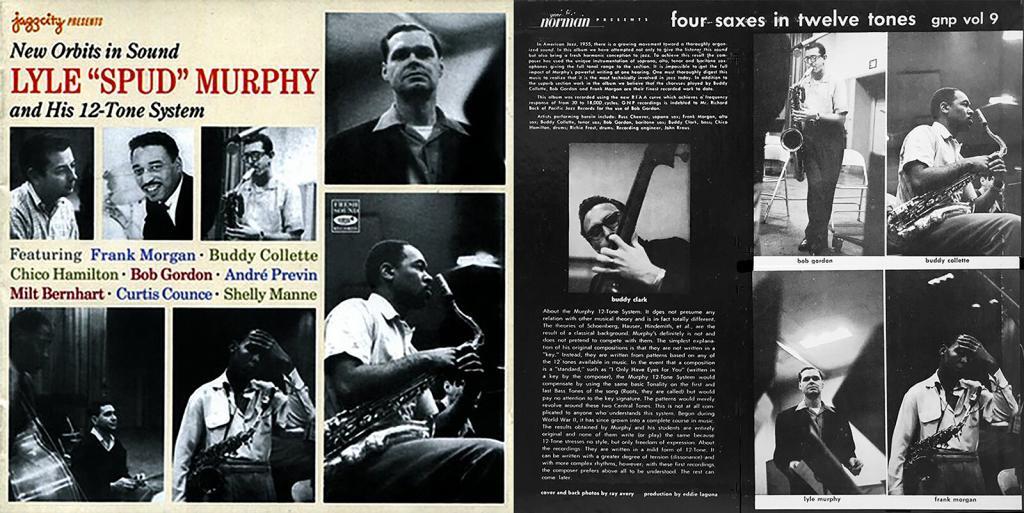
Murphy led a series of notable jazz ensemble recording sessions at the famed Capitol Studios in Hollywood, 1954-57. The all-star roster featured saxophonists Frank Morgan, Bobby Gordon and Buddy Collette with Andre Previn (piano), Curtis Counce (bass) and drummers Chico Hamilton or Shelly Manne. Spud composed, arranged, directed and played celeste (keyboard), creating innovative music for record albums released variously as New Orbits in Sound, Gone with the Woodwinds and Four Saxophones in Twelve Tones.
Sage Educator
Murphy eventually authored 26 books including an extended course on composing, arranging and orchestration, his Equal Interval System. Kennard Ramsey, a film and television composer who studied with Mr. Murphy said that it ”took a lot of the mystery and misinformation out of traditional music studies — he made it so simple to see.” Illustrious graduates of the method include Oscar Peterson, Herbie Hancock and Quincy Jones.
Equal Interval System:
I have a twelve-volume course for composers. Any kind of music. My students . . . they’re already composers and arrangers when they take it. All it is is an easy way to write . . . the standard method is very limited whereas mine starts out right away being far out.
The study of music has been so difficult that by the time you learn how to write, you don’t want to listen to your own music anymore. Because they still teach music in two ways: the regular standard system which is circa 1750, which won’t help you much. And the Schoenberg method, which is completely dissonant, and you can’t make an arrangement with it. You can only write, quote, Modern music. It goes so far as to the final volume, which is called The Theory of Total Dissonance. Now you can’t go any farther than that.
Seeger Ellis Choirs of Brass, I Know that You Know, Shivery Stomp
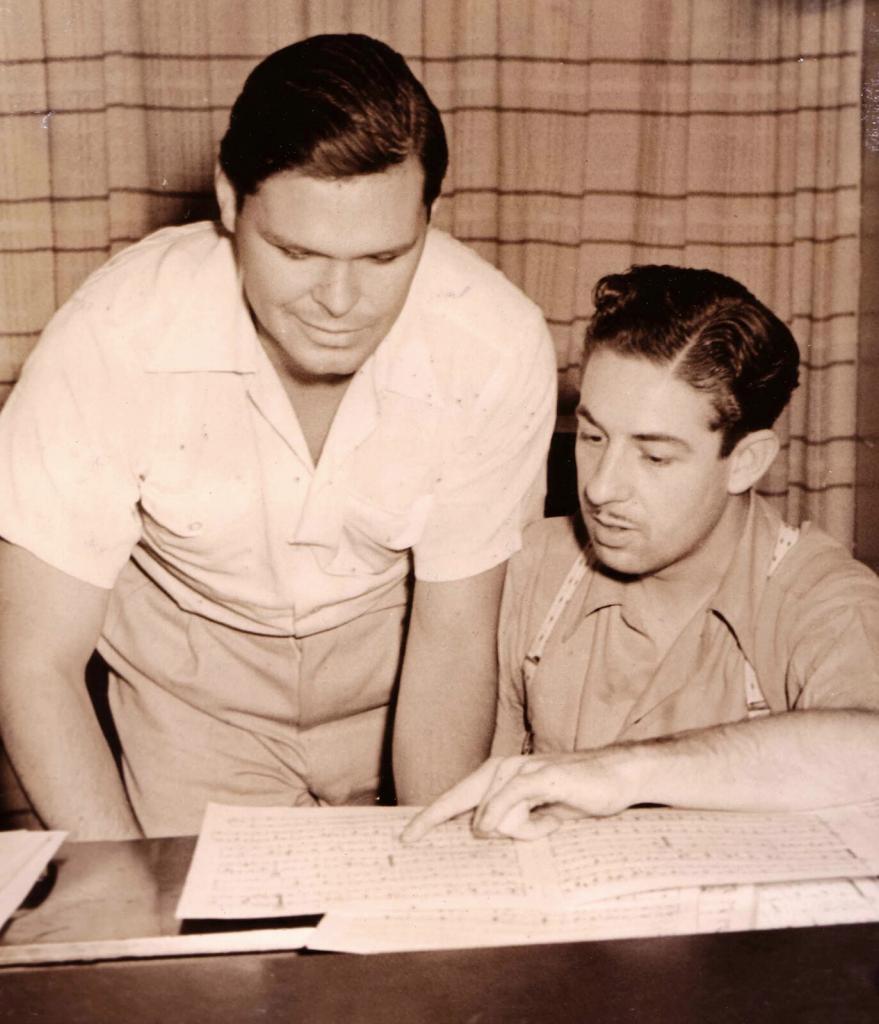
An Unsung Genius
A polymathic musician and tunesmith, the fertile mind of Lyle “Spud” Murphy seized upon any venue, medium or format as an opportunity for application of his sparkling gift for musical organization and invention. His practical teaching system brought instruction for composing and orchestrating into the modern era. Our hero was in the vanguard of Swing, first among equals in a coterie of mostly forgotten scribes and unheralded architects who laid the foundations of Jazz, Swing and Popular American music during the middle years of the Twentieth Century.
‘Doing What I Liked to Do:’
Well, I would have done this anyway, money or no money. I’m very fortunate in the fact that I made a living doing what I liked to do. And not everybody gets that opportunity.
Hear the award-winning radio programs or find more at the Jazz Rhythm Spud Murphy page.
Thanks, and Sources:
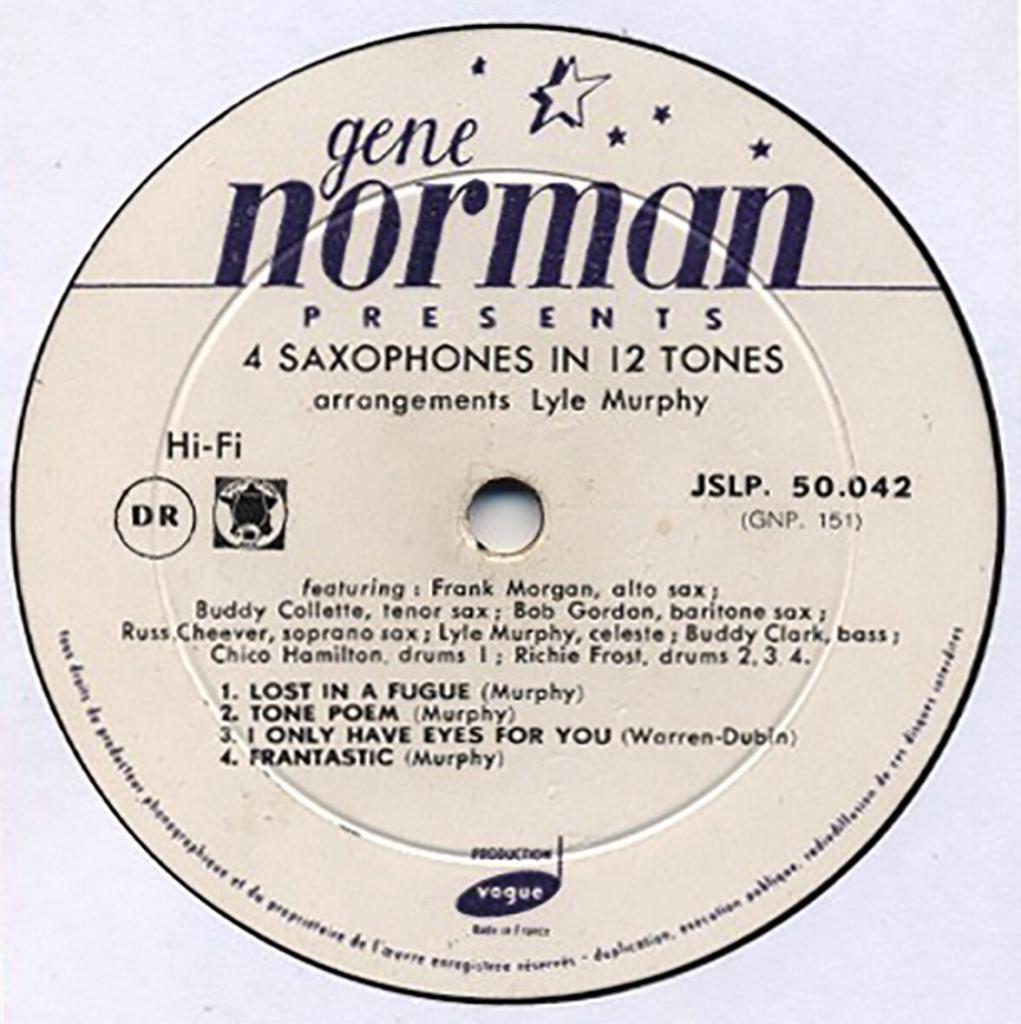 Spud Murphy was interviewed in Los Angeles, 2003. Great thanks to Dean Mora who assisted with the interview and generously supplied photos, background data, rare audio and commentary. Mora’s Modern Rhythmists offer Murphy’s arrangements on the CD Goblin Market (currently out-of-print). Thanks to Dan Radlauer for expert commentary and technical assistance.
Spud Murphy was interviewed in Los Angeles, 2003. Great thanks to Dean Mora who assisted with the interview and generously supplied photos, background data, rare audio and commentary. Mora’s Modern Rhythmists offer Murphy’s arrangements on the CD Goblin Market (currently out-of-print). Thanks to Dan Radlauer for expert commentary and technical assistance.
Lyle “Spud” Murphy: Arranged Theme for Three Stooges, John Thurber, Los Angeles Times/Boston.com, 8.14.2005
Murphy’s scores and arrangements are found at the Tulane Jazz archives and in the Benny Goodman collection at Yale University.
Jazz Records: 1897-1942 [discography], Brian Rust (Arlington House, 1978)
Lost Chords: White Musicians and Their Contribution to Jazz 1915-1945, Richard Sudhalter (Oxford University Press, 1999)
The New Grove Dictionary of Jazz (St. Martin’s Press, 1988)
Dave Radlauer is a six-time award-winning radio broadcaster presenting early Jazz since 1982. His vast JAZZ RHYTHM website is a compendium of early jazz history and photos with some 500 hours of exclusive music, broadcasts, interviews and audio rarities.
Radlauer is focused on telling the story of San Francisco Bay Area Revival Jazz. Preserving the memory of local legends, he is compiling, digitizing, interpreting and publishing their personal libraries of music, images, papers and ephemera to be conserved in the Dave Radlauer Jazz Collection at the Stanford University Library archives.


